Leaving Playa Palo Seco, my friend Melissa and I were excited to visit Manuel Antonio National Park. About an hour from our home base, it was the first time I had visited the park and I was so excited for the opportunity to see sloths and howler monkeys. Located in the town of Quepos on the Pacific Coast, the park is known for its wildlife and beautiful beaches.
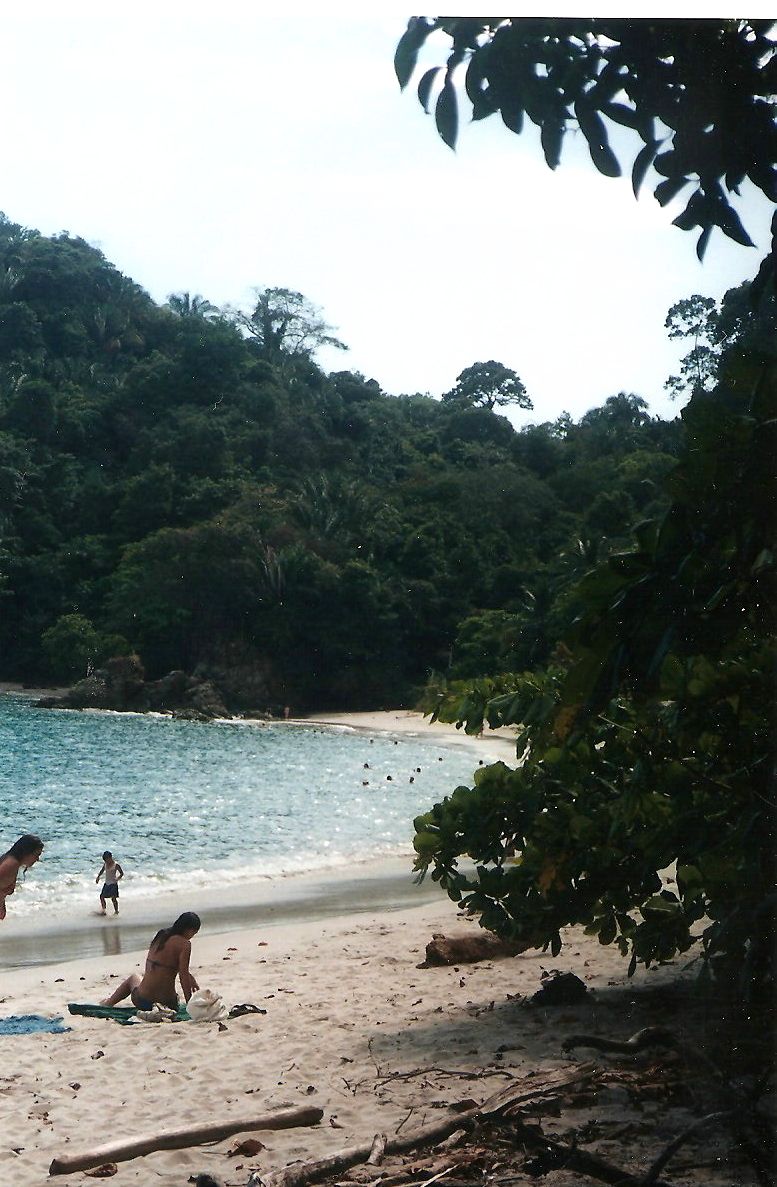
We needed to find the “Beach Trail” to reach the entrance, so we stopped at one of the refreshment stands before entering the park. We found a sign directing us towards the entrance, then after passing over the bridge, there was another sign directing us in the right direction. From the bridge, it took us about 5 minutes until we had arrived.
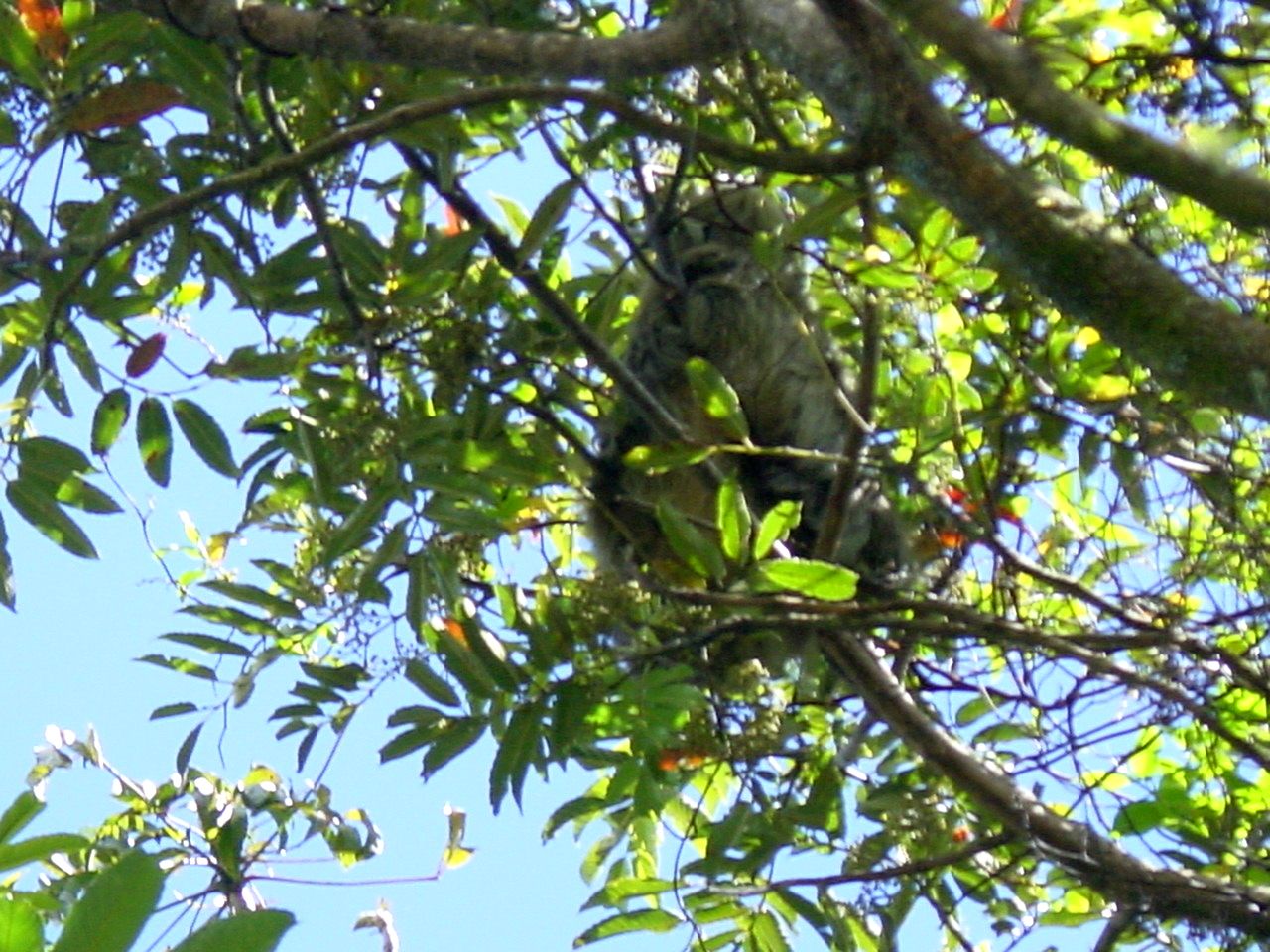
The first hike we took was the Sendero el Perezoso Trail (sloth trail). We did not realize that this would have taken us deeper into the park, but we were so excited to see sloths with our guide. This trail runs parallel to the main trail within the park and we spent about 30 minutes on this trail because there were several 2-fingered and 3-fingered sloths. Be careful if you find yourself looking up often as you would not want to trip over anything or miss any of the other amazing wildlife in the park such as crabs scurrying along the trail.
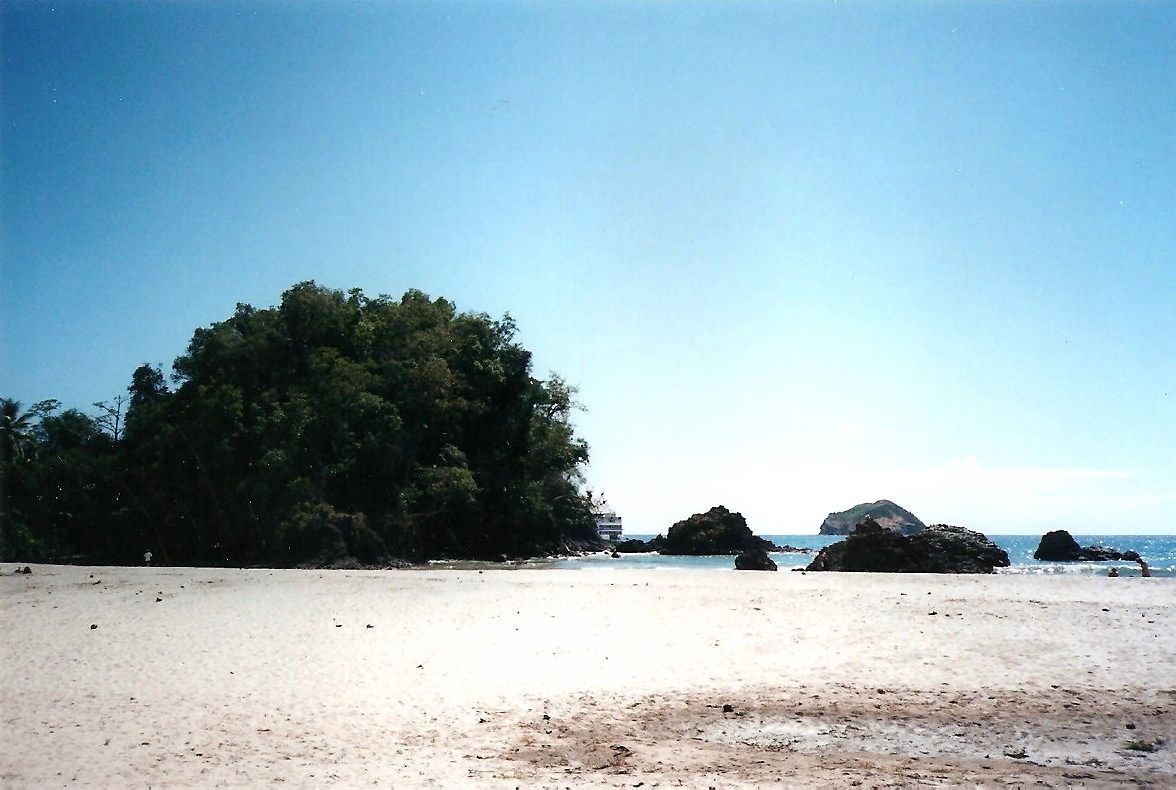
The Punta Catedral trail is just under a mile and leads to Punta Catedral which was once an island I remember when we would visit here in the mid-90s and we would schlep through the water to reach the island. Since that time, a strip of beach has been formed from several years of sand and sediment build up. We always loved the amazing views by hiking the perimeter of the island.
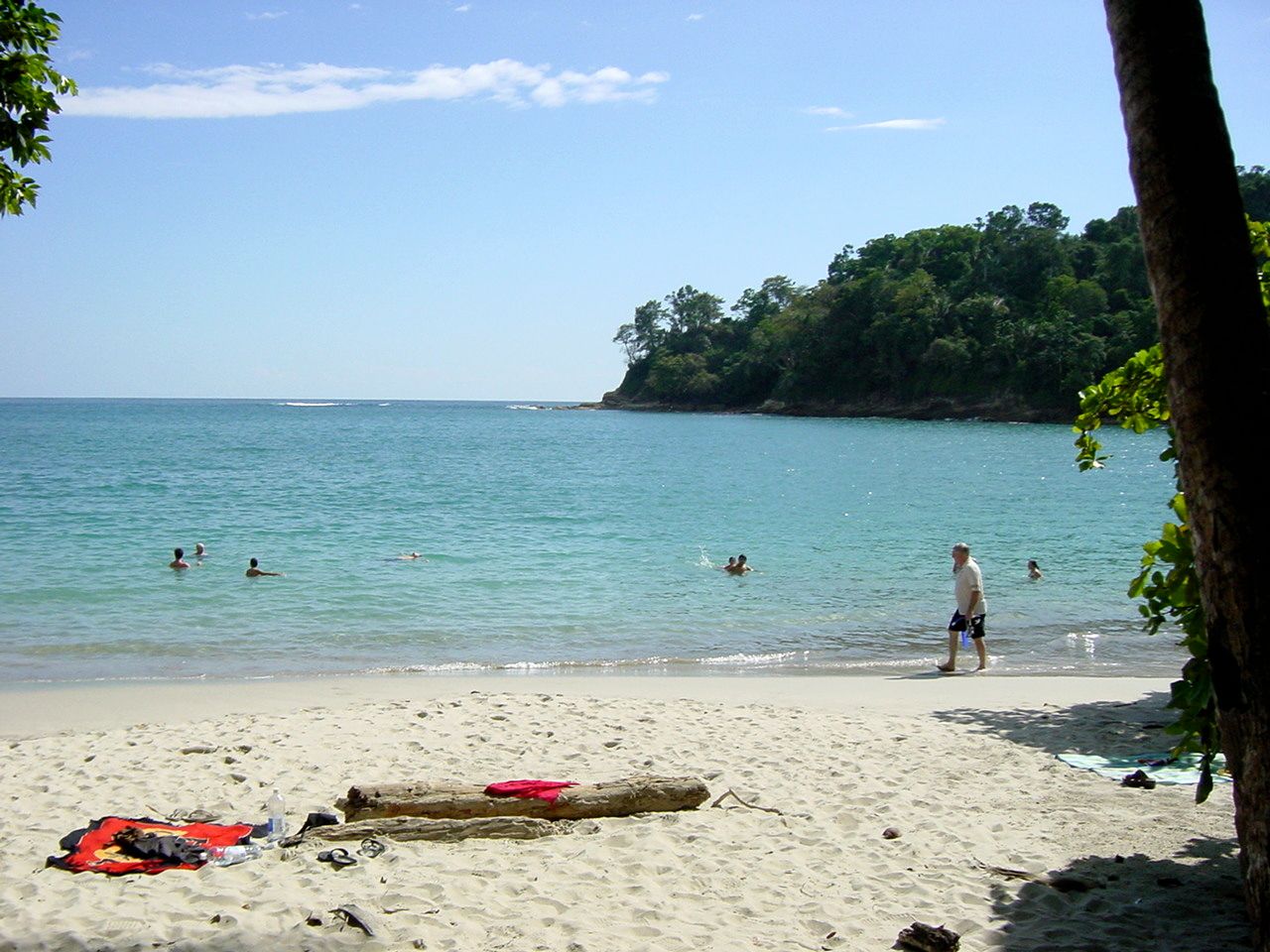
The Sendero Playa Gemelas leads to the beach for which it is named. This trail and beach is less crowded and provides some great tropical views. It is also a great place to relax for a swim. The trail is short and connects with other trails, so no need to worry about getting lost. At the end of the trail is one of my favorite views to see Playa Puerto Escondido. This is the place where we always find little geckos and I have heard some say that they have seen iguanas here though I have never seen them.
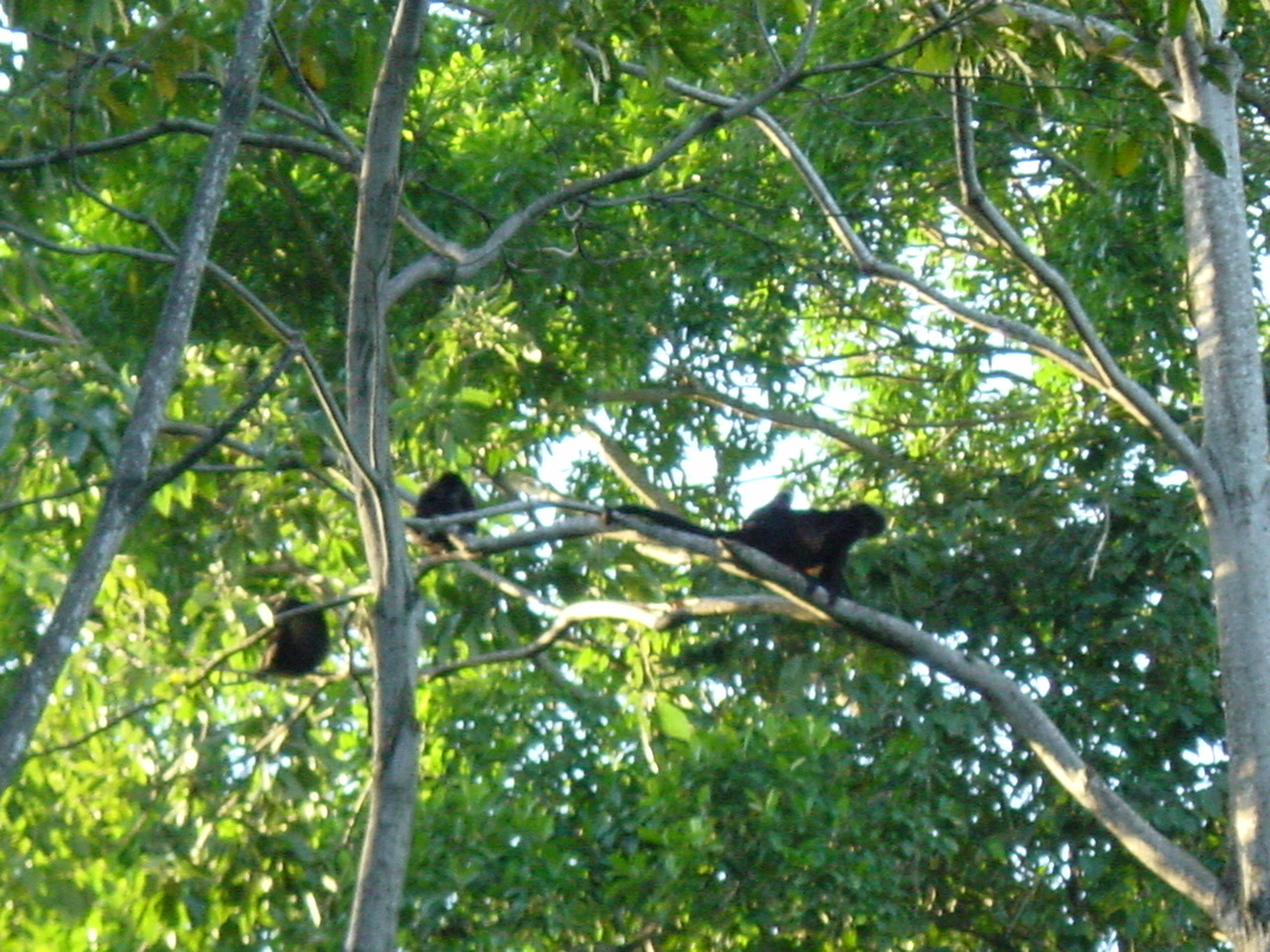
My favorite trail is the one that connects the Sendero Playa Gemelas and the Sendero Mirador known as the Sendero Congo. Although it is a short path, it is where I can find the most howler monkeys in one place, it is so exciting to see these small little creatures chasing each other in the trees.
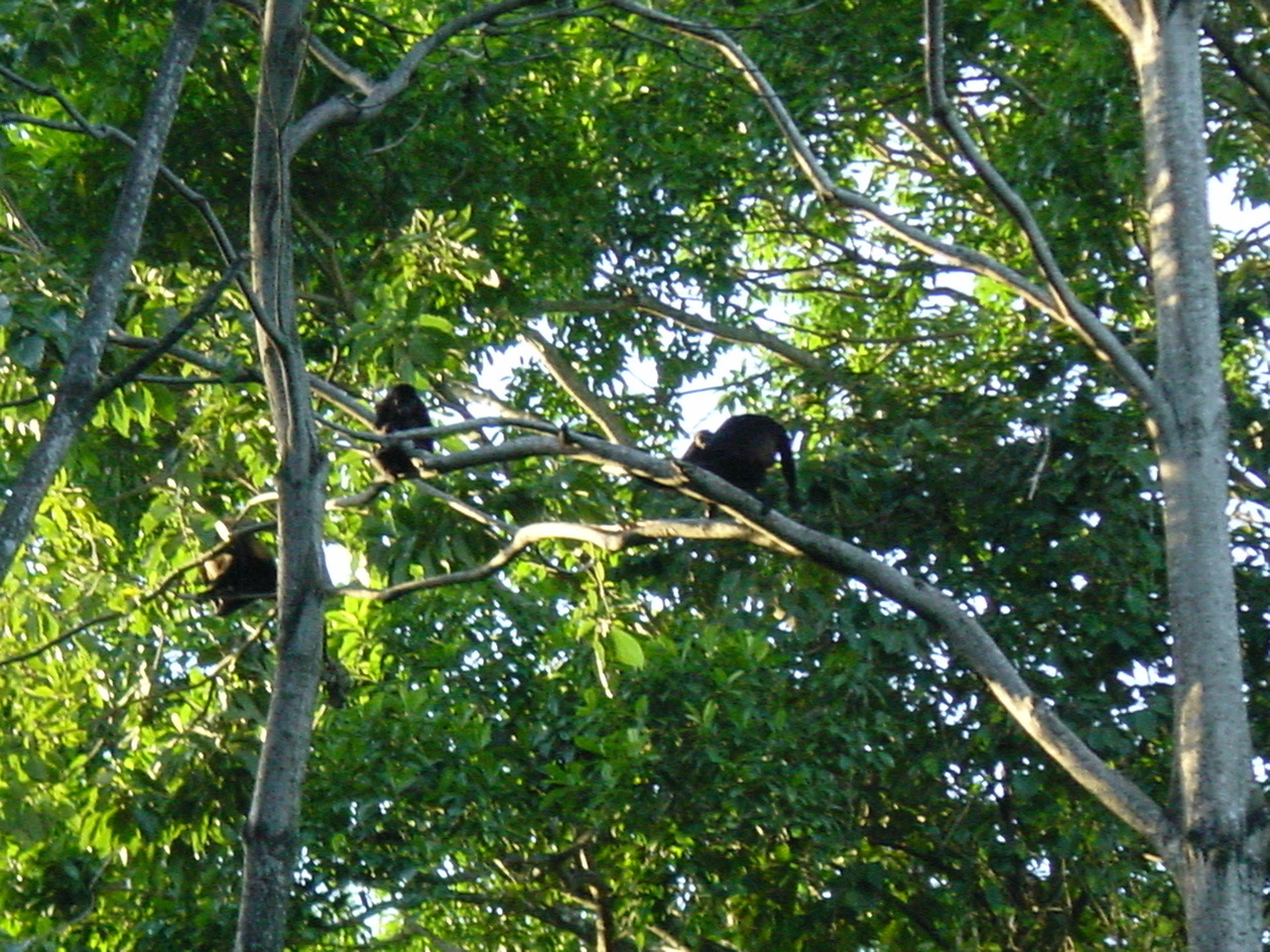
While there may be time where you can’t find the howlers on the trail, you may be able to hear them.
According to the park map, there are eleven separate trails. Don’t worry as the trails are clearly marked and posted placards are available along the way.
A visit to Manuel Antonio National Park is always an exciting time, so arrive early and spend as much time as you can exploring the trails, searching for howler monkeys and spotting sloths.
Have you visited Manuel Antonio National Park in Costa Rica? I would love to hear about your experience if you would kindly leaved a message in the comments section below. Many thanks for reading about my visit to the national park and wishing you amazing adventures!
What to See and What to Do:
Manuel Antonio National Park
Quepos, Puntarenas, Costa Rica
Telephone: 506 2777 3339 or 800 280 2597
- Admission Fee: $18.08 for adults; $5.65 for children ages 2 – 12; children under the age of 2 is free
- Hours: Daily from 7AM to 5PM with the exception of Tuesday. The park is open on holidays unless the holiday falls on a Tuesday. The nearby beach closes at 3 and the park rangers will notify the remaining visitors that they will need to leave the park by 4PM, starting towards the exit by 3:30PM.
- Amenities: Guided tours ($51 for adults, $35 for children); Private tours ($71 for adults and $55 for children) The tours last for about 2.5 to 3 hours. You can purchase your tickets through a third party (i.e., Viator) that will provide a guide. Guides are available to show you around the park. They will tell you about the flora and fauna as well as show you were the animals are hiding within the parks. Most tours will last only a couple of hours, but should you want to stay longer, the guide can explain how to take the bus back or where to grab a taxi. Independent guides should wear their badges showing their ICT certification. For 2, expect to pay $20 per person for 2 hours and if they charge more, you can easily find another guide that will accept the $20 per hour/per person rate.
- Parking: Parking is available at the park and there are several parking lots. Follow the sign at the entrance and an attendant will assist you with parking. Remember to note which parking lot you have parked your vehicle. Do not leave valuables in the car, roll up your windows and ensure the doors are locked. Pay for parking in Costa Rican colones, not American dollars. Depending on the season, you can expect to pay 3000 to 6000 colones. On your way to parking, look for restaurants and shops on the left and this will let you know that you are close. There may be attendants that will tell you that you must park in their lot, but this is a scam. After passing the shops and restaurants, you will see the Super Joseth convenient store. You will notice a small road to your left, so turn left here and past the Hotel Vela Bar to reach the parking lots. Drive carefully as this is a narrow road.
- Scenic View: The park’s animals…the sloths and monkeys in the wild.
- Length of Visit: 2 – 3 hours to include the beach
- Tips for Your Visit: Arrive early before the crowds. Tickets must be purchased online as they are not available at the entrance. If you arrive without a ticket, you will not be able to enter. The park only sells approximately 3000 tickets per day. December through April and June through August are high season, so purchase your tickets well in advance. The website provides instructions for purchasing the tickets and you can select the English language. The tickets are only valid for one day as there are no multi-day tickets available. Your ticket can only be used once, which means you will need to purchase multiple tickets for the dates you would like to enter. Ensure that you hire a certified guide who can point out the elusive sloths. You should ask for their ICT (Institute of Costa Rica Tourism) credentials. There will be scammers dressed in park ranger uniforms or fake badges and name tags. When you arrive at the park, bring a printed copy of your reservation (the reservation number or barcode) in addition to your passport. Should you not have your passport, you can show a copy of your passport for entry. Alcohol, guns, cigarettes, drugs and speakers are prohibited. Set your GPS or Google Maps to “Welcome Center Manuel Antonio” or “Hotel San Beda” for the correct directions.There are three bathrooms at the entrance of the park and three additional bathrooms within the park. There is one facility where you will find bathrooms, showers and changing booths. Visitors are not permitted to being food into the park. In 2023, the park added a cafeteria where visitors can purchase sandwiches, salads and drinks. There are also restaurants at the entrance of the park.
Where to Stay:
We stayed at our private residence located at Playa Palo Seco during our stay
Where to Eat:
Rico Tico Jungle Grill
Near Manuel Antonio Si Como No Resort & Wildlife Refuge
Manuel Antonio, Costa Rica
Telephone: 506 2777 0777
What to Eat:
- Arroz con Leche is translated to rice with milk and is a popular dessert in Costa Rica. Additional ingredients include milk, cinnamon, salt and lemon zest, making this a delicious end to your meal.
- Casado, which means marriage which is an interesting combination of meat such as beef, pork, chicken and fish as well as rice, beans, tortillas, fried platano maduro and salad. In addition, the dish also includes a fruit juice.
- Ceviche is raw fish that has been “cooked” with citrus juices.
- Gallo Pinto is a mixture of rice and beans with red bell peppers, onions, cilantro and other spices. The secret ingredient is the Salsa Lizano. It is a popular breakfast dish.
- Sopra Negra is translated to black soup, which is the base of this delicious soup. Included with the black beans, there are onions, peppers, tomatoes, soft boiled eggs and spicy spices.
- Tamales are similar to their Mexican cousin, but there are some differences, one of which is the wrapping. In Costa Rica, tamales are wrapped in banana leaves rather than corn husks.
What to Drink:
- Agua Dolce (sweet water): which is sweetened with cane sugar
- Cerveza (Beer): Imperial
- Guaro: sugar cane liquor which sneaks up on you. Cacique is the most popular brand.
What to Read:
- It’s Every Monkey for Themselves: A True Story of Sex, Love and Lies in the Jungle by Vanessa Woods
- Oro by Cizia Zyke
- Green Phoenix: Restoring the Tropical Forests of Guanacaste, by William Allen
- Monkeys are Made of Chocolate: Exotic and Unseen Costa Rica, by Jack Ewing
- Costa Rica: A Traveler’s Literary Companion by Barbara Ras, Oscar Arias
- The Year of Fog, by Michelle Richmond
Photo Guide for Costa Rica:
- Manuel Antonio National Park for wild animals such as sloths and monkeys
- Tortuguero National Park for amazing loggerheads and hawksbill
- Poas Volcano National Park for its impressive view of the interior of the volcano
Disclosure: Please refer to our blog disclaimer tab for more information.